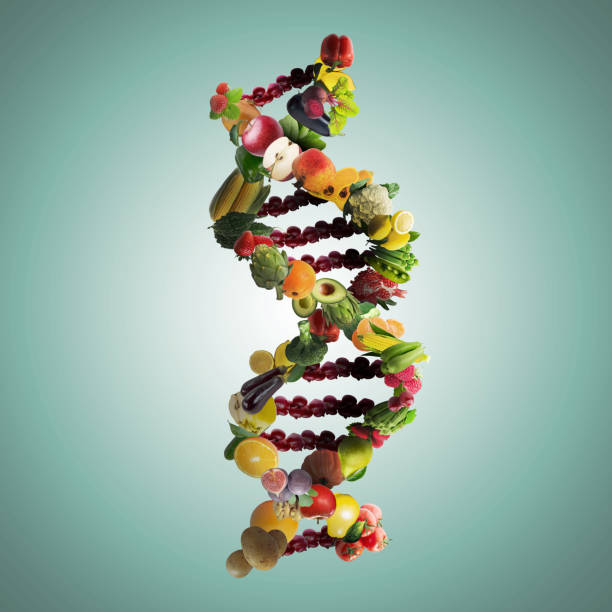Micronutrient Essentials: Identifying and Meeting Key Needs
A clear understanding of micronutrient needs supports energy, immune function, and long-term health beyond calorie counts. This brief overview highlights key vitamins and minerals, how they interact with digestion and metabolism, and practical meal planning strategies using whole foods, proteins, fiber, and plant-based choices to improve nutrient coverage and satiety.

Micronutrients — the vitamins and minerals the body needs in small amounts — are critical for enzyme activity, immune responses, and many aspects of metabolism. Focusing solely on calories or macronutrients overlooks the cofactors that allow cells to produce energy, maintain tissues, and repair damage. Identifying typical gaps and using thoughtful meal planning, whole foods, and portion control helps improve micronutrient adequacy while supporting digestion, hydration, and long-term metabolic health.
This article is for informational purposes only and should not be considered medical advice. Please consult a qualified healthcare professional for personalized guidance and treatment.
What are micronutrients and how do they differ from macronutrients?
Micronutrients include vitamins and minerals, while macronutrients are carbohydrates, fats, and proteins that supply energy and structural components. Micronutrients are not an energy source but act as cofactors and signaling molecules that support metabolic pathways. A diet that balances macronutrients with micronutrient-dense whole foods — fruits, vegetables, legumes, lean proteins, nuts, and seeds — reduces the risk of suboptimal intake compared with highly processed diets that emphasize calories over nutrient diversity.
Which vitamins and minerals support digestion and metabolism?
Key B vitamins (B1, B2, B3, B6, B12, folate) are involved in converting food into usable energy, and minerals such as magnesium and iron participate in enzymatic reactions and oxygen transport. Vitamin D, calcium, and phosphorus support bone and muscle function, while zinc contributes to immune competence and tissue repair. Adequate stomach acid and healthy intestinal function promote absorption; for example, vitamin C enhances non-heme iron uptake, and intrinsic factor is essential for vitamin B12 absorption in the gut.
How does hydration influence micronutrient needs and satiety?
Hydration affects digestion, nutrient transport, and sensations of hunger. Water is necessary for dissolving water-soluble vitamins and maintaining blood volume that delivers nutrients to tissues. Mild dehydration can impair cognition and metabolic performance and may be mistaken for hunger, reducing perceived satiety. Foods high in water content—soups, fruits, and vegetables—contribute both fluids and micronutrients. Electrolytes like potassium, sodium, and magnesium are minerals to monitor in situations of heavy sweat loss or illness.
How can whole foods, proteins, and fiber improve absorption?
Whole foods provide complex matrices of vitamins, minerals, phytochemicals, and fiber that promote steady digestion and nutrient uptake. Animal proteins often supply bioavailable iron, zinc, and B12, while plant proteins contribute fiber and plant-based micronutrients. Fiber supports gut microbiota and regular transit, which can enhance mineral availability indirectly. Combining protein and fiber at meals—for example, a lentil salad with greens and seeds—extends fullness and improves the likelihood of meeting diverse micronutrient needs without excess calories.
How do meal planning and portion control help meet micronutrient needs?
Thoughtful meal planning ensures variety across days and weeks so that different vitamins and minerals are consumed routinely. Portion control helps align calorie intake with activity level while allowing space for nutrient-dense choices: aim for a plate with vegetables, a source of protein, whole grains or starchy vegetables, and a small amount of healthy fat. Rotating legumes, nuts, fortified foods, and lean proteins reduces repetitive gaps. Simple strategies—batch cooking, adding a vegetable to every meal, and using portion control for energy-dense items—support both satiety and nutrient adequacy.
Are plant-based strategies sufficient for micronutrient diversity?
Plant-based diets can meet micronutrient needs when planned intentionally. Legumes, whole grains, nuts, seeds, leafy greens, and fortified plant milks provide many vitamins and minerals plus fiber. Attention is needed for nutrients that are less abundant or less bioavailable in plant sources—vitamin B12, heme iron, and sometimes zinc and calcium. Techniques such as soaking, sprouting, and fermenting grains and legumes can improve mineral bioavailability, and fortified products or targeted testing may be appropriate for long-term planning.
Conclusion Micronutrients play essential roles in digestion, metabolism, immune function, and tissue maintenance despite being needed in small amounts. Integrating micronutrient-focused choices into balanced meal planning—using whole foods, adequate proteins, fiber, proper hydration, and portion control—helps improve nutrient intake and satiety. Regularly rotating food sources and considering fortified options or professional assessment when concerns arise supports sustained nutrient balance and metabolic resilience.





